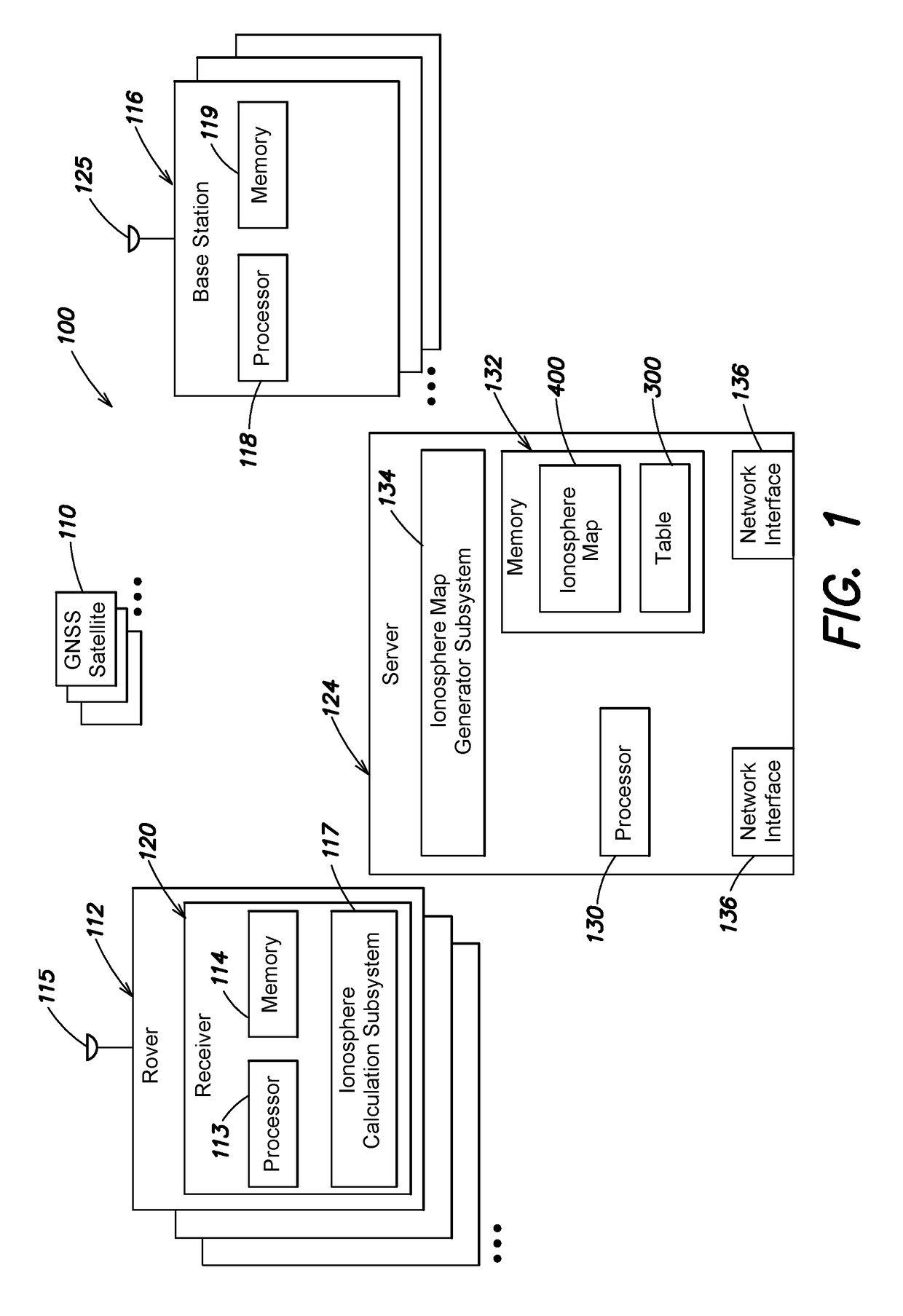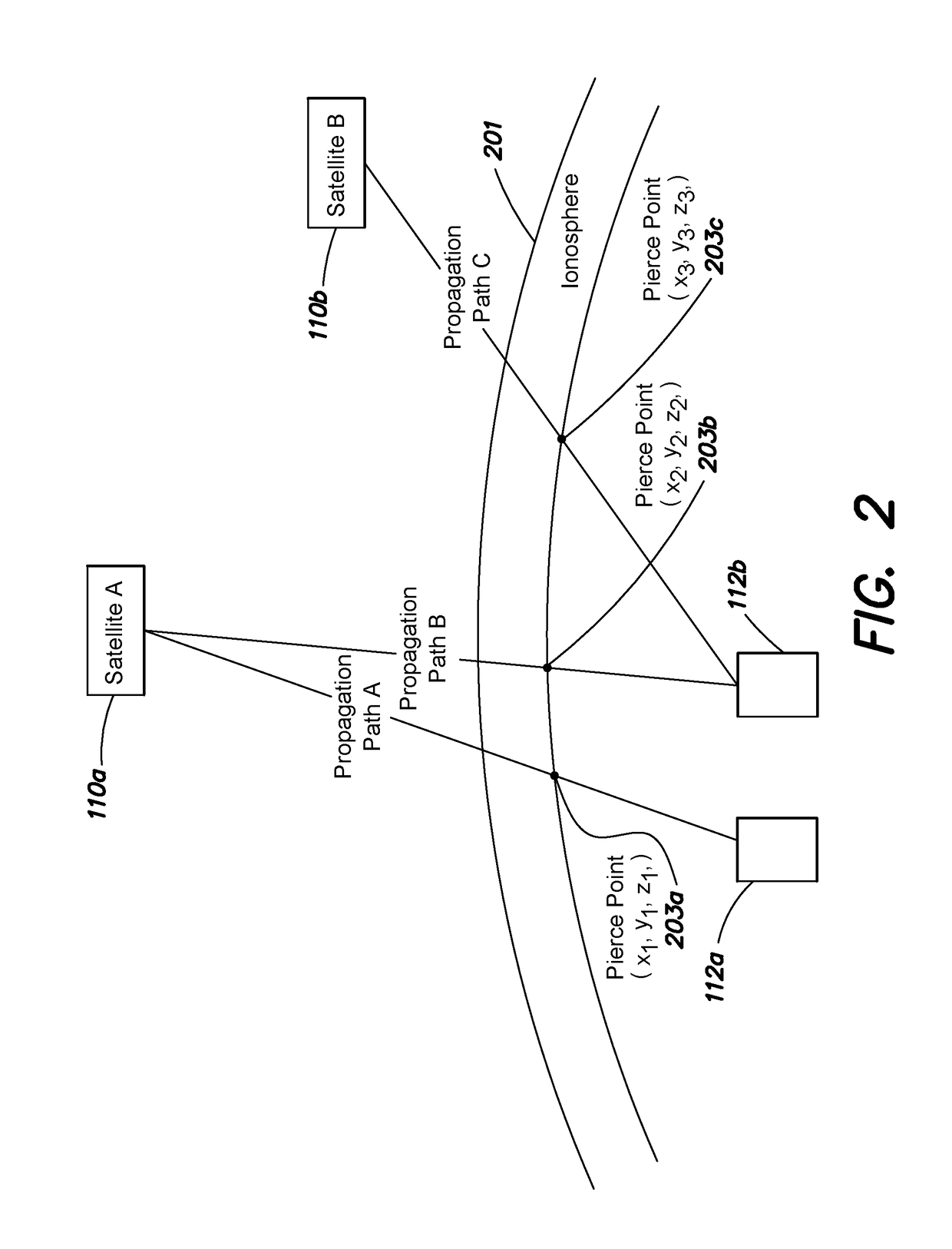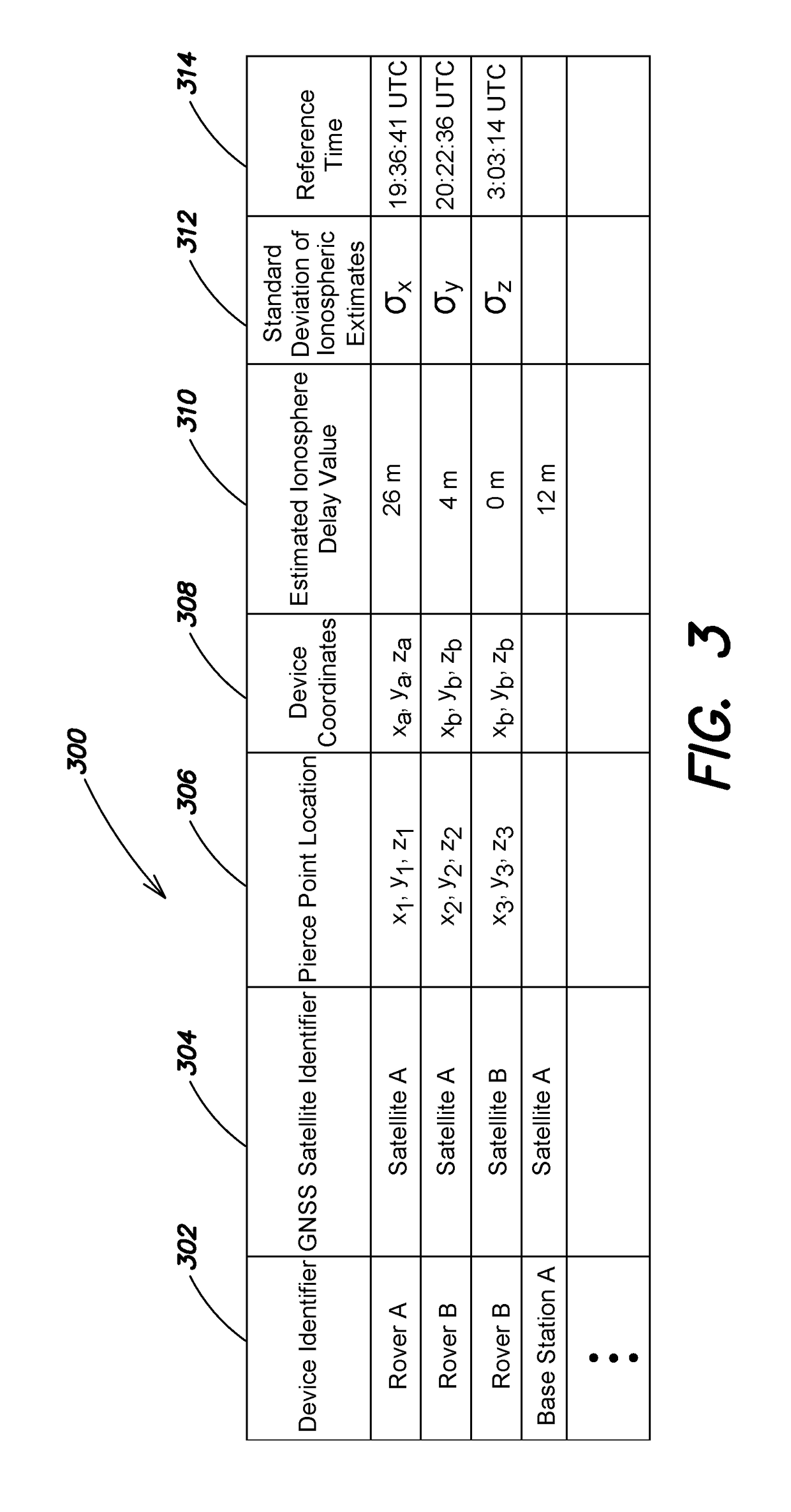Crowdsourcing atmospheric correction data
a technology of atmospheric correction and crowdsourcing, applied in the field of global navigation satellite systems, can solve the problems of degrading the accuracy of overall position calculation, and the long time needed to obtain the desired accuracy, e.g., convergence tim
- Summary
- Abstract
- Description
- Claims
- Application Information
AI Technical Summary
Benefits of technology
Problems solved by technology
Method used
Image
Examples
Embodiment Construction
[0015]Referring to FIG. 1, a system 100 includes one or more rovers 112, one or more base stations 116, and a central server 124. The rovers 112 and base stations 116 may operate as part of a real time kinematic (RTK) system and / or a Precise Point Positioning (PPP) system over a wired or wireless network (not shown) or satellite-based data delivery (not shown), as known by those skilled in the art.
[0016]The one or more base stations 116 are typically stationary, have known positions and essentially clear views of the sky. The base station 116 includes an antenna 125 that receives global navigation satellite system (GNSS) satellite signals from one or more GNSS satellites 110 in view of the base station 116. In addition, the base station 116 includes one or more processors 118 and a memory 119. The one or more processors 118 may operate in a known manner to acquire and track the GNSS satellite signals, make raw observations (e.g., carrier and code-phase (pseudorange) observations), a...
PUM
 Login to View More
Login to View More Abstract
Description
Claims
Application Information
 Login to View More
Login to View More - R&D
- Intellectual Property
- Life Sciences
- Materials
- Tech Scout
- Unparalleled Data Quality
- Higher Quality Content
- 60% Fewer Hallucinations
Browse by: Latest US Patents, China's latest patents, Technical Efficacy Thesaurus, Application Domain, Technology Topic, Popular Technical Reports.
© 2025 PatSnap. All rights reserved.Legal|Privacy policy|Modern Slavery Act Transparency Statement|Sitemap|About US| Contact US: help@patsnap.com



